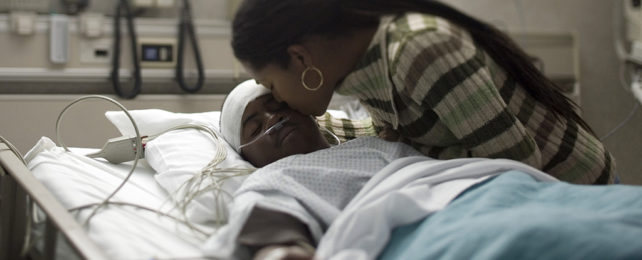Monitoring the status of critically-ill patients in hospital is an essential task often complicated by the need to make tough, high-stake decisions under pressure. In intensive care especially, seconds count.
According to a new study, algorithms could soon fill the role instead. Researchers propose software could be trained to accurately and reliably spot changes in a person's consciousness from simple physiological markers that are already being logged as a matter of course.
While vital signs such as heart rate and blood pressure are tracked continuously using monitors, brain function and consciousness are much harder to monitor, as doing so involves hour-long assessments from clinical teams.
In the hands of an electronic system, the monitoring of brain functions could be continuous and constant, identifying changes in status a daily check might miss altogether, or catch too late.
It's still early days in devising such technology, but preliminary results suggest it's a feasible approach – and it would be relatively easy and affordable to roll out in most intensive care units (ICU). It could potentially be installed in bedside monitoring equipment, supplementing the examinations of medical professionals.
"Consciousness isn't a light switch that's either on or off – it's more like a dimmer switch, with degrees of consciousness that change over the course of the day," says computer scientist Samantha Kleinberg, from the Stevens Institute of Technology in New Jersey.
"If you only check patients once per day, you just get one data point. With our algorithm, you could track consciousness continuously, giving you a far clearer picture."
The researchers built an algorithm to track feeds from a range of emergency room sensors, including those measuring heart rate, breathing rate, brain temperature, and blood oxygen levels. Importantly, these stats can be monitored constantly, without the patient needing to be alert or awake.
Data from a total of 239 patients with hemorrhages were analyzed in the study, enabling the team to map levels of consciousness against the sensor readings, before using that data to develop an algorithm that could determine the former from the latter.
The algorithm was then able to classify patients' states of consciousness just as well as trained clinicians, and almost as well as more complex, expensive equipment like functional magnetic resonance imaging (fMRI) machines.
"That's hugely important, because it means this tool could potentially be deployed in virtually any hospital setting – not just neurological ICUs where they have more sophisticated technology," says Kleinberg.
There's still plenty of work to do. The data that the system was trained on was collected just before clinical assessments, and it hasn't yet been shown that the algorithm can accurately predict consciousness 24/7.
However, the potential is there: existing methods for checking up on patients can take substantial amounts of time and can only be performed intermittently. Many also require the patient to be responsive, or need expensive equipment. This promises to solve all those problems.
As well as reducing the demands on health professionals, the researchers think their newly developed algorithm can improve outcomes for patients, as well as inform future research into the somewhat mysterious state of consciousness.
"Consciousness is incredibly hard to study, and part of the reason is that there simply isn't much data to work with," says Kleinberg. "Having round-the-clock data showing how patients' consciousness changes could one day make it possible to treat these patients far more effectively."
The research has been published in Neurocritical Care.
